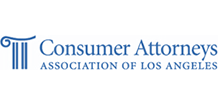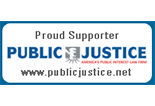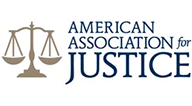California has led the nation in promoting cycling as a sustainable and healthy form of transportation. Bike lanes now line hundreds of miles of city streets, from Los Angeles and Ventura County to the Bay Area. Yet these lanes, intended to protect riders, have also become the sites of tragic collisions. Wrongful death claims can be complex; hiring the right California lawyer is key.
When a cyclist is killed by a negligent driver—or when a poorly designed or maintained bike lane contributes to the crash—their family may be entitled to pursue a wrongful death claim. These claims can hold drivers, cities, or other parties accountable and help survivors recover financial compensation for their loss.
Below, we explain how wrongful death law applies to bicycle lane fatalities in California and what families need to know to seek justice.
California’s Rising Bicycle Fatalities
California consistently records some of the nation’s highest numbers of cyclist deaths. According to the California Office of Traffic Safety (OTS), more than 120 cyclists are killed each year, and thousands more are injured. Many of these fatalities occur inside or near bike lanes where riders have the legal right of way.
Common causes include:
- Drivers drifting into bike lanes while distracted or impaired
- “Dooring” accidents where a car door opens into a rider’s path
- Unsafe lane merges or turns across marked bike lanes
- Poor lighting or missing reflectors on roadways
- Damaged pavement or debris forcing cyclists into traffic
Even in protected lanes, cyclists are vulnerable. Painted lines and plastic posts can’t stop a two-ton vehicle from entering the lane.
What Makes a Bicycle Lane Crash a Wrongful Death Claim
A wrongful death claim arises when a person’s death is caused by another’s negligence or wrongful act. In a cycling context, this might include:
- A distracted driver texting and veering into the bike lane
- A truck making a wide right turn without checking blind spots
- A rideshare or delivery driver stopping illegally in a bike lane
- A city or county failing to maintain safe lane markings or signage
To succeed, the victim’s family (or estate) must prove:
- The defendant owed a duty of care (e.g., to follow traffic laws or maintain safe infrastructure).
- The defendant breached that duty through negligence or recklessness.
- The breach directly caused the cyclist’s death.
- The family suffered measurable damages as a result.
Who Can File a Wrongful Death Claim in California
Under California Code of Civil Procedure §377.60, the following individuals may bring a wrongful death claim:
- The deceased person’s spouse or domestic partner
- Children of the deceased
- Parents or other dependent relatives if no spouse or children exist
- The personal representative of the estate
The claim must be filed within two years of the date of death, though cases involving government entities (such as city-maintained bike lanes) require a government claim within six months.
Possible Defendants in a Bike Lane Fatality
Negligent Drivers
The majority of bicycle lane fatalities involve motor vehicles. Common factors include distracted driving, speeding, failure to yield, or intoxication. In these cases, the driver—and often their employer if they were on duty—may be held liable.
Cities, Counties, and Public Agencies
If unsafe road design, missing signage, or poor maintenance contributed, the local government could be responsible. Examples include:
- Faded or missing lane markings
- Potholes or drainage grates in bike lanes
- Inadequate street lighting
- Unclear intersection design
Public-entity claims are subject to strict procedural deadlines under the California Government Claims Act.
Construction Contractors or Utility Companies
When roadwork temporarily obstructs bike lanes without proper barriers or warnings, contractors can be liable for failing to provide a safe detour.
Recoverable Damages
Families filing wrongful death claims can seek both economic and non-economic damages, including:
- Funeral and burial costs
- Loss of the victim’s expected financial support
- Loss of companionship, love, and emotional support
- Value of household services the deceased provided
- In some cases, punitive damages (if the defendant’s conduct was egregious, such as drunk driving)
Gathering Evidence After a Fatal Bicycle Crash
Investigations often require prompt action to preserve evidence. Steps include:
- Obtaining the police or CHP collision report
- Requesting nearby surveillance or traffic camera footage before it’s erased
- Photographing the scene, debris, and skid marks
- Identifying witnesses or other cyclists who saw the crash
- Inspecting road design, signage, and lighting conditions
Attorneys frequently work with accident reconstruction experts and traffic engineers to prove how the collision occurred and whether infrastructure design played a role.
Role of Comparative Negligence
California’s pure comparative negligence rule allows fault to be divided among multiple parties. Even if the cyclist shared some responsibility—such as not wearing reflective gear or failing to signal a turn—the family can still recover damages reduced by that percentage of fault.
Example: If the total damages equal $2 million and the cyclist is found 10% at fault, the family can still recover $1.8 million.
Preventable Design Failures
While driver negligence is a leading cause of fatal bike crashes, poor infrastructure also plays a major role. Common examples include:
- Bike lanes that abruptly end before intersections
- Drainage grates aligned parallel to the lane (trapping wheels)
- Narrow lanes that encourage encroachment by vehicles
- Lack of separation or barriers on high-speed roads
California law requires municipalities to consider Complete Streets principles—designing roadways for all users, including cyclists and pedestrians. When cities ignore these standards, they may be liable for preventable deaths.
Frequently Asked Questions
What if the driver was never charged criminally?
A wrongful death claim is a civil case, separate from criminal prosecution. Families can still recover damages even if the driver is not charged or convicted.
Can more than one party be sued?
Yes. Families can name multiple defendants—such as the driver, their employer, and the city that designed the unsafe bike lane—so long as each contributed to the death.
How long does a case take?
Complex wrongful death cases may take months or years depending on investigations, insurance negotiations, and potential government involvement.
What happens if the city denies responsibility?
If a government agency rejects your initial claim, you have six months from the denial to file a lawsuit in civil court.
Are punitive damages available?
Yes, in limited cases—such as when a driver was intoxicated, street racing, or acting with conscious disregard for human life.
Why These Cases Matter
Every bicycle lane death is preventable. Families who pursue wrongful death claims not only seek justice for their loved ones but also push for safer infrastructure—better lighting, improved barriers, and more visible signage.
Holding negligent drivers and agencies accountable ensures that California’s bike lanes serve their purpose: protecting riders, not endangering them.








